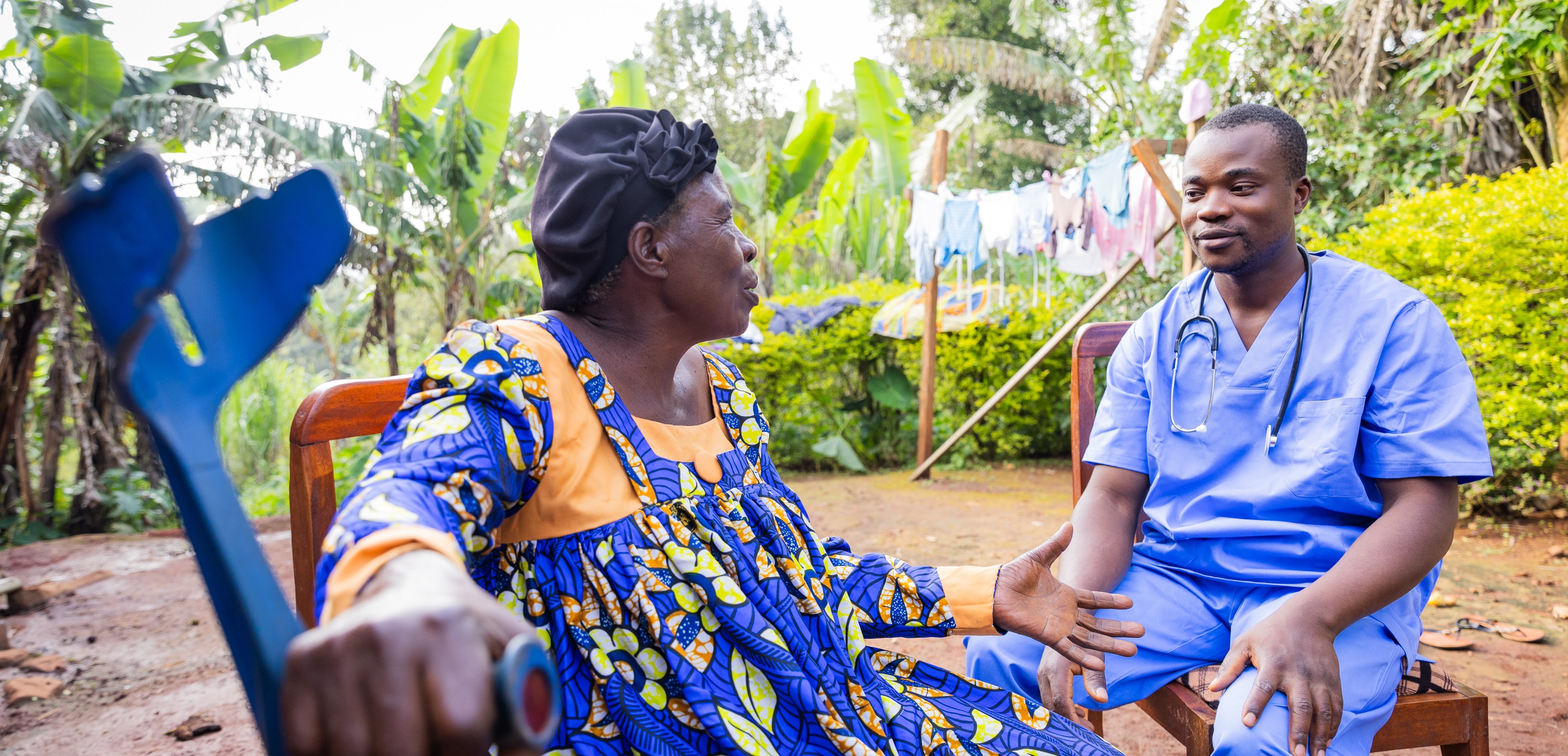
Non-communicable diseases tend to be of long duration, and are the result of a combination of genetic, physiological, environmental and behavioral factors, and disproportionately impact people in low- and middle-income countries. When individuals with NCDs face tremendous healthcare costs and a restricted ability to work, their households struggle with increased financial risk. These factors, especially when combined with lack of access to NCD screening and treatment services, can lead to high rates of NCDs, which in turn can perpetuate poverty, strain economic development, and burden fragile health systems, making countries less resilient when emergencies like infectious disease outbreaks from natural disasters occur.
At BD, we focus our Global Public Health programming and investments on cancer, peripheral arterial disease (PAD), and kidney disease. Each of these conditions carries high morbidity and mortality rates [vi] that disproportionately impact communities already facing health disparities due to lack of screening and access to treatment.[vii],[viii]
Our Global Public Health Priorities
[vi] Demsas F, Joiner MM, Telma K, Flores AM, Teklu S, Ross EG. Disparities in peripheral artery disease care: A review and call for action. Semin Vasc Surg. 2022 Jun;35(2):141-154. doi: 10.1053/j.semvascsurg.2022.05.003. Epub 2022 May 8. PMID: 35672104; PMCID: PMC9254894.
[vii] Zavala, V. A., Bracci, P. M., Carethers, J. M., Coggins, N. B., R., M., Davis, M., De Smith, A. J., Dutil, J., Figueiredo, J. C., Fox, R., Graves, K. D., Gomez, S. L., Llera, A., Neuhausen, S. L., Newman, L., Nguyen, T., Palmer, J. R., Palmer, N. R., J., E., . . . Fejerman, L. (2021). Cancer health disparities in racial/ethnic minorities in the United States. British Journal of Cancer, 124(2), 315-332. https://doi.org/10.1038/s41416-020-01038-6
[viii] GBD 2013 Mortality and Causes of Death Collaborators. Global, regional, and national age–sex specific all-cause and cause-specific mortality for 240 causes of death, 1990–2013: a systematic analysis for the Global Burden of Disease Study 2013. Lancet 2015; 385: 117–71.
[ix] https://www.who.int/news-room/fact-sheets/detail/cervical-cancer; accessed 11/03/2023
[x] Sung H, Ferlay J, Siegel RL, Laversanne M, Soerjomataram I, Jemal A, et al. Global cancer statistics 2020: GLOBOCAN estimates of incidence and mortality worldwide for 36 cancers in 185 countries. CA Cancer J Clin. 2021:71:209–49. doi:10.3322/caac.21660.
[xi]Benard VB, Jackson JE, Greek A, Senkomago V, Huh WK, Thomas CC, Richardson LC. A population study of screening history and diagnostic outcomes of women with invasive cervical cancer. Cancer Med. 2021 Jun;10(12):4127-4137. doi: 10.1002/cam4.3951. Epub 2021 May 21. PMID: 34018674; PMCID: PMC8209614.
[xii] Kovesdy CP. Epidemiology of chronic kidney disease: an update 2022. Kidney Int Suppl (2011). 2022 Apr;12(1):7-11. doi: 10.1016/j.kisu.2021.11.003. Epub 2022 Mar 18. PMID: 35529086; PMCID: PMC9073222
[xiii] Same as xii
[xiv] https://www.kidneyfund.org/all-about-kidneys/quick-kidney-disease-facts-and-stats#:~:text=37%20million%20Americans%20have%20kidney,are%20living%20with%20kidney%20failure.&text=Kidney%20disease%20is%20growing%20at,greater%20risk%20for%20kidney%20failure.; accessed 11/03/2023
[xv] https://www.kidney.org/atoz/content/minorities-KD#:~:text=Yes%2C%20one%20in%20three%20people,increased%20risk%20for%20kidney%20disease.; accessed 11/03/2023
[xvi] Garba Rimamskep Shamaki, Favour Markson, Demilade Soji-Ayoade, Chibuike Charles Agwuegbo, Michael Olaseni Bamgbose, Bob-Manuel Tamunoinemi, Peripheral Artery Disease: A Comprehensive Updated Review,Current Problems in Cardiology, Volume 47, Issue 11,2022,101082,ISSN 0146-2806, https://doi.org/10.1016/j.cpcardiol.2021.101082.
[xvii] Epidemiology and Risk of Amputation in Patients With Diabetes Mellitus and Peripheral Artery Disease J. Aaron Barnes, Mark A. Eid, Mark A. Creager and Philip P. Goodney; Originally published25 Jun 2020 https://doi.org/10.1161/ATVBAHA.120.314595Arteriosclerosis, Thrombosis, and Vascular Biology. 2020;40:1808–1817
[vxiii] Norgren, L., Hiatt, W. R., Dormandy, J. A., Nehler, M. R., Harris, K. A., & Fowkes, F. G. R. (2007). Inter-society consensus for the management of peripheral arterial disease (TASC II). Journal of vascular surgery, 45(1), S5-S67., 4. Yost, ML. The Sage Group (2017). Critical Limb Ischemia by Rutherford Category: Prevalence and Markets in Patients and Limbs.